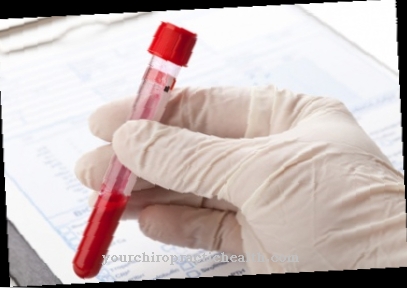In the High frequency surgery it is a surgical procedure for cutting tissue, coagulating blood vessels or necrotizing various biological structures. The method has many advantages over standardized procedures and is mostly used successfully in microsurgery and neurosurgery, but also in general surgery.
What is HF surgery?

The high frequency surgery, also known under the name HF surgery, is a surgical procedure to specifically cut through or damage tissue. By using alternating current at high frequency, the energy generated is converted into heat.
The heat generated can cut tissue and necrotize or obliterate biological structures. The HF surgery procedure is used at a high frequency from 300,000 Hertz and hence its name. The purpose of a high frequency is to only slightly irritate the nerve pathways by frequently changing the direction of flow. At a low frequency and the resulting slight change in flow direction, the nerve tracts are strongly stimulated. An electric shock can result, causing cardiac arrhythmias or acute cardiac arrest. This neuromuscular stimulus is also known as the faradic effect.
When using high-frequency surgery, a so-called electrolytic effect occurs. This means that there is an ion shift in the corresponding tissue structures. The alternating current causes the ions to move back and forth at an increased speed in the high frequency range, causing the ions to oscillate. The surgeon makes use of the resulting thermal effect. Depending on the current density, duration of exposure and resistance of the tissue, coagulation or tissue severance occurs.
Function, effect & goals
HF surgery is used today in almost all areas of surgery. In many surgical treatments, this procedure uses the cutting and simultaneous closure of the blood vessels to advantage. This enables targeted cuts to be made through tissue structures without significant blood loss.
The most common application is the treatment of vascular damage in order to close it by means of so-called coagulation and to stop the bleeding that occurs. Furthermore, benign and malignant myomas and tumors are increasingly being devitalized and thus necrotized. The application spectrum of high-frequency surgery ranges from a minimally invasive procedure to a large coagulation incision.
A special electrosurgical device is required for operative care through HF surgery. This consists of a generator that converts the supply current into high-frequency alternating current. The alternating current is then passed on to a special instrument with a metal tip or metal pliers. This metal attachment is nothing more than a point-shaped active electrode. This creates a high concentration of energy on the small active electrode and can achieve the desired electrosurgical effect at the application site. When using a metal tip, a so-called neutral electrode is applied over the entire surface under the tissue to be treated. This has no thermal effect and is used to close the circuit.
High-frequency surgery is divided into two methods of application technology. A distinction is made between monopolar and bipolar technology. These two techniques differ in the way the electrical current takes to the neutral electrode.
With the monopolar technique, a narrow active electrode is used as an attachment, which results in an increased concentration of alternating current and thus an increased thermal effect. The neutral electrode is applied over a large area under the operating area. This method is used to cut and coagulate tissue structures. Compared to cutting with a scalpel, this technique has the advantage that it does not lead to excessive bleeding. The surrounding tissue is spared and the spread of germs is prevented.
In the bipolar technique, the surgeon uses bipolar electrodes. The metal attachment is designed like a pair of pliers and is divided into two metal ends. The forceps consist of an active electrode and a neutral electrode. A separate neutral electrode is not required here. By using these metal tips, both poles are in contact with the operating area. This technique is mostly used in neurosurgery and microsurgery in order to use the thermal effect for coagulation and thus the closure of vessels.
When using high-frequency surgery, it should always be borne in mind that the different biological structures also have different resistance forces. In the case of blood, for example, this is 0.16 x 10 ohmmeters, compared to 3.3 x 10 ohmmeters in fat tissue. In order to ensure the safety of the patient, it must be ensured that they are stored in a dry and isolated manner, that there is no contact with an earthed device and no skin contact with the doctor or assistant. The surgeon should wear special gloves during the procedure
You can find your medication here
➔ Medicines for paresthesia and circulatory disordersRisks, side effects & dangers
If the surgeon complies with all the specified safety and hygiene standards while using high-frequency surgery, this is a very safe surgical method.
If, for example, the neutral electrode is forgotten or applied incorrectly, severe burns can occur. The current is then not fed back to the generator, but via the operating table or other earthed device. If burns occur on the patient, a distinction is made between endogenous, exogenous and pseudo burns. Endogenous burns occur when the current density in the tissue is too high. This can happen, for example, if the patient has contact with conductive and earthed equipment during the procedure.
Exogenous burns, on the other hand, result from the combustion of liquids or gases. This can lead to small explosions and thus burns. The cause of these explosions can be skin disinfectants or anesthetic gases. One speaks of a pseudo-combustion if there is neither an endogenous nor an exogenous combustion.
Furthermore, it should be noted that pacemakers can be damaged by the use of HF surgery. Therefore, the risk should be weighed and if necessary an internist should be consulted.













.jpg)

.jpg)
.jpg)











.jpg)